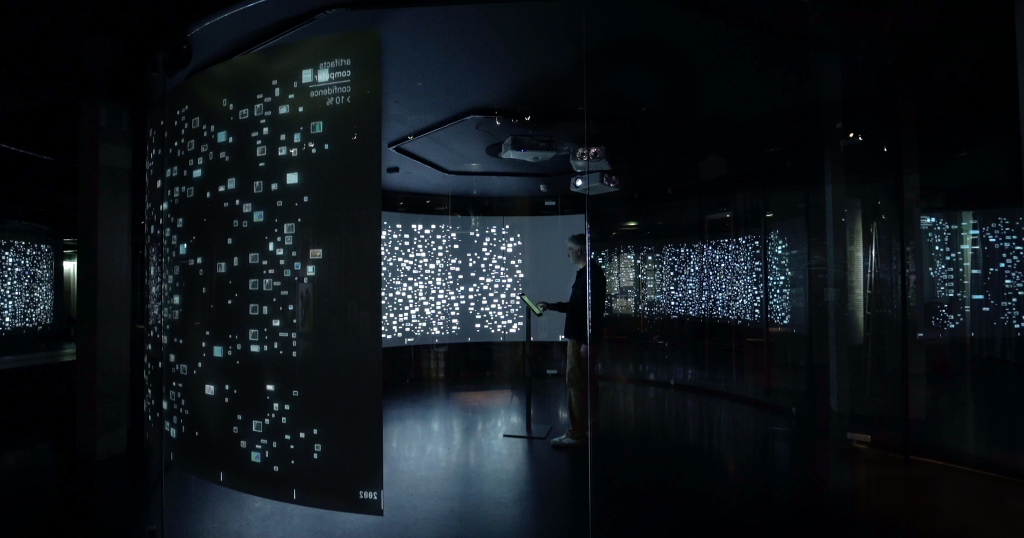Electric Atmospheres explores the invisible dimensions of wireless communication in an urban context.
Electromagnetic waves were discovered by Heinrich Rudolf Hertz in the 1880’s. Today, the foundation underpins modern communication technologies, from Wi-Fi and cell phone networks to Smart Cities and the Internet of Things. Modern life would not be possible without the electromagnetic waves carrying our data. As important as it is, most of us have a limited conception of how this system works. We imagine information magically popping up at the right place and beaming us straight from a cell tower to a phone.
Reality is much more complex and much more interesting. Electromagnetic waves are a spatial medium inhabiting spaces like cities, buildings, and our bodies. They are three-dimensional and interact with their surroundings. As we move through a city with our cell phones, we carry an electromagnetic “aura” that moves through buildings and morphs shape in reaction to their physical and electrical properties.
What if we could see this dimension? What does the world look like when you visualise the interaction between architecture and information? Unfortunately, we cannot perceive electromagnetic waves, and the scale and complexity make it difficult to measure the characteristics of the electromagnetic signals around us. However, their behaviour is well understood and given a detailed three-dimensional map and enough computing power to be simulated.

Using the High-Performance Computing power at BSC, we aim to run a series of simulations where we look at the interaction of a digital device, such as a smartphone, with the architecture around it. We will then visualise the outcome of the simulation in context so we can understand its scale and interaction with its environment. We will explore distinct environments (different cities and specific buildings) and analyse time series (simulating a person with a device moving through space).
The relationship between Radio and Architecture goes back to the early beginnings of the medium and was perhaps even more potent than it is now. Early radio required massive structures (radio towers) to send signals, and in the middle of the 20th century, every house had a TV antenna pointing towards the nearest tower. This was understood by the architect Buckminster Fuller, who insisted that “the real site of architecture is the electromagnetic spectrum.” Today, radio may even be more important but also increasingly invisible. Radio towers have given way to small cell antennas on high buildings’ roofs and Wi-Fi routers embedded in walls and ceilings. Together with RCR, we would like to explore the meaning of electromagnetic waves in contemporary architecture.

